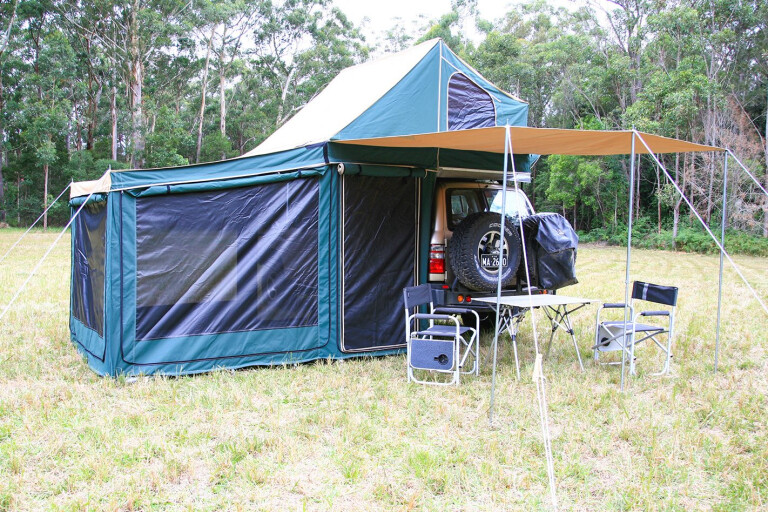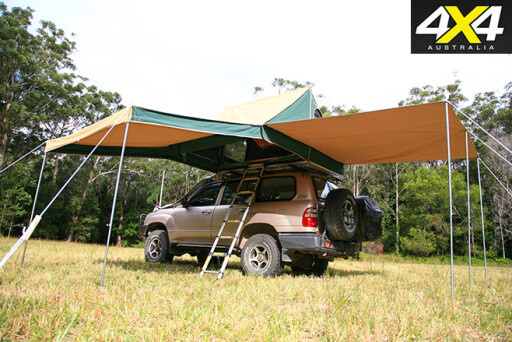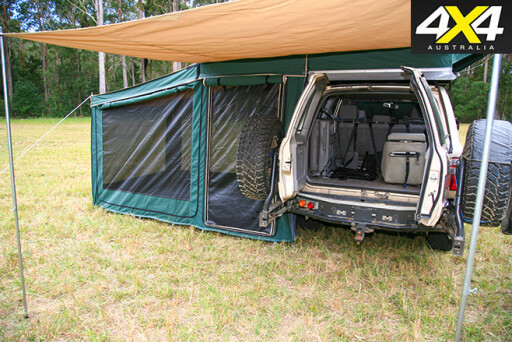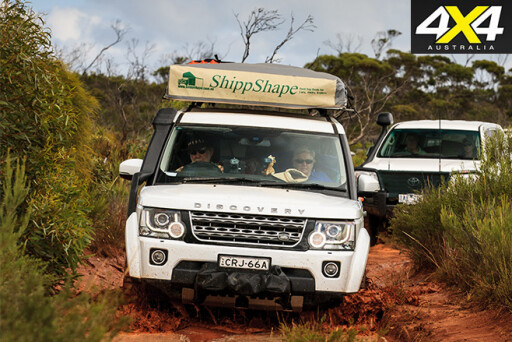
I was lucky enough to meet Erik Shipp, who, with his wife Inga, designed and manufactured his first Shippshape rooftop tent in 1985.
In the late ’80s and early ’90s, I used them on a number of trips and they were respected for their quality and design. Shippshape sold thousands of tents here and overseas.
Sadly, Eric died in 2011, and while Inga is a lively soul, the company was basically wound up. Luckily for us, Mark Allen – fellow 4X4 Australia contributor and experienced remote-area traveller – has rejuvenated the brand, vowing to stay true to the original design, and keeping it Australian-made with the best of Australian product throughout.
I’ve used a few roof-toppers over the years. Apart from the early model Shippshapes, I used another roof-topper for eight weeks on the Canning Stock Route a few years ago, spent 18 months in one on my Nissan Patrol while trekking around the world, and used a number of brands of fold-in-half rooftop tents during six separate three-to-five week tag-along trips in Africa. And in Oz, I’ve used other brands for a few days, up to a few weeks.
Room with a View
I like the full-length rooftop tent much more than today’s common imported fold-in-half rooftop tents. The full-length rooftop tents usually have much more comfortable mattresses, more floor space, more head and shoulder room and more room for bedding storage. Yep, they do take up more room on the roof rack, but once you have your tent and your bedding up top, what else must you fit in your vehicle, apart from clothes, food, a fridge and a stove? Not much really.
 There are three models in the new Shippshape rooftop tent range, starting with The Shack, which is the basic tent with a side awning. The Bush Hut adds to The Shack with four separate walls for a fully enclosed room, while an optional floor can also be added to insect-proof the Bush Hut. The Homestead adds a large zip-on room with integrated-PVC floor to the Bush Hut for a more enclosed and covered living or sleeping area. While all the model names are the same, from the Erik Shipp days, there have been a number of minor changes to improve the design.
There are three models in the new Shippshape rooftop tent range, starting with The Shack, which is the basic tent with a side awning. The Bush Hut adds to The Shack with four separate walls for a fully enclosed room, while an optional floor can also be added to insect-proof the Bush Hut. The Homestead adds a large zip-on room with integrated-PVC floor to the Bush Hut for a more enclosed and covered living or sleeping area. While all the model names are the same, from the Erik Shipp days, there have been a number of minor changes to improve the design.
We had The Bush Hut, but because we were moving nearly every day, we rarely set any of the walls up and, even if we did, it was just one or two side walls; we never worried about the floor or back wall.
The tent is housed in a large box, 2100x1400mm, with an alloy frame and sides, and a waterproof plywood base. The unit can be fitted to basically any roof rack or set of roof bars with the mounting kit supplied. However, if you are using roof bars, at least three bars, equally spaced, are required for optimum support. The box and tent unit in the basic Shack configuration weighs 55kg.
 The tent’s canvas section is manufactured from WCT Australia’s Billabong dyna-proofed 10.9oz canvas, which is a light-medium, weight-blended, polyester-cotton fabric. The mesh used in the flyscreens and doors is midgee-proof Fintex, while the zips are top-shelf YKK brand. The unit is guaranteed for 12 months.
The tent’s canvas section is manufactured from WCT Australia’s Billabong dyna-proofed 10.9oz canvas, which is a light-medium, weight-blended, polyester-cotton fabric. The mesh used in the flyscreens and doors is midgee-proof Fintex, while the zips are top-shelf YKK brand. The unit is guaranteed for 12 months.
The three bows, which support the tent, are of steel tubing, and the bow opening and sliding mechanism has been improved to run smoother and to stop the bows pinching the canvas when in the closed position. Unlike some rooftop tents, none of the bows create problems with small openings at corners – this makes the Shippshape insect-proof, which means it’s a godsend when in mozzie or midgee country.
The ladder is a telescopic alloy one- that is easily stored within the unit, unlike the full-length earlier version that was stored outside of the tent box. You need to be a careful with this telescopic ladder, though, because dust and sand tend to jam it when opening or closing. Use a dry lubricant on it for the best and easiest operation.
Over the top of the alloy box is a water-and-dust-proof zip-on PVC cover with six compression straps (three each side) to help prevent the cover from flapping while driving, regardless of how much (or little) is stored under the cover. The zip-style closure was the only real flaw I found with the whole unit – I much prefer the simpler elastic-type strap found on tonneau covers and the like. The zip proved to be very difficult to do up and after a couple of days of trying, I gave up and used the compression straps alone.
 The queen-size mattress is made from 120mm high-density foam, making it comfy and roomy – there is an optional innerspring which, by all accounts, is lighter and more comfy, but I like the foam mattress. A couple of pillows, some sheets, a light blanket and a doona all fit easily under the cover to ensure you have a warm and comfortable night whatever the weather.
The queen-size mattress is made from 120mm high-density foam, making it comfy and roomy – there is an optional innerspring which, by all accounts, is lighter and more comfy, but I like the foam mattress. A couple of pillows, some sheets, a light blanket and a doona all fit easily under the cover to ensure you have a warm and comfortable night whatever the weather.
After you have undone the PVC cover and folded it forward over the windscreen of the vehicle, the basic tent opens easily. You need to climb the ladder, grab the edges of the tent and walk back down the ladder to bring the tent with you, which opens very quickly. Once the first bow is horizontal, the tent remains open on its own accord – something many other rooftop tents don’t do. It is advisable to put down a peg or two and we put the side awning out with a couple of tent poles to give us a bit more undercover area. Total time to erect the tent was just a few minutes.
The tent is well ventilated and has zippered flyscreens at each end, and a full-length flyscreen on the far side (protected by a canvas verandah held out in place with two metal stays), while the access door also has a zippered screen.
Occasionally, when the wind was blowing or the camps were cramped, we zipped on a wall or two for privacy. These were quick to fit. You’d have to be staying longer than a night or two to worry about more walls and the floor, I reckon, but that could be a personal thing.
We had a couple of windy nights and some light rain during our time with this Shippshape and it kept us dry at all times.
 Dropping the tent was easy, but packing it away, so the PVC cover would fit easily enough, took a little longer, while the zip, as mentioned earlier, was a darn pain.
Dropping the tent was easy, but packing it away, so the PVC cover would fit easily enough, took a little longer, while the zip, as mentioned earlier, was a darn pain.
A couple of points worth noting about any rooftop tent:
First, you need to be aware of the tent and any low-hanging branches in the scrub.
Secondly, you can’t have a square box on the roof rack without losing a little fuel economy. It’s a fact of life.
Shippshape – How Does it Rate?
I’m bloody glad to see the brand back and even happier the product remains Aussie-made.
With the high standard of material, design and construction of this latest Shippshape, you have to expect to pay a bit more than you would for the imported cheapies, but I can’t think of a better rooftop tent available in Oz.

COMMENTS